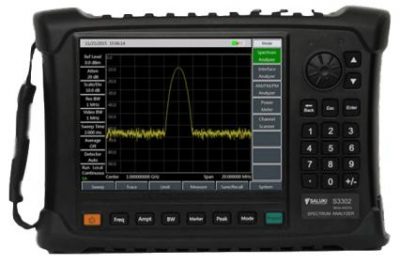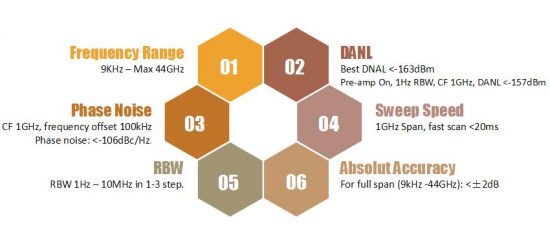The spectrum analyzer is a widely used analytical instrument, mainly for detecting RF and microwave signals, and has certain applications in many fields. There are some parameters in the spectrum analyzer that need to be noticed by the user.
1 Frequency Range
The range of signal frequencies that can be analyzed while the spectrum is operating. For the preferred indicator of the spectrum, the test signal must be guaranteed to be within the operating frequency range of the spectrum.
2 Input Power
The input power of the spectrum is divided into average continuous, pulse input power. The average continuous power is the maximum power value at which the instrument can continuously input signals. Pulse input power refers to the value of the pulse input power measured by the spectrum (strictly comply with the manufacturer’s required pulse width, duty cycle parameters). The general unit of input power is expressed in dBm, and dBm is a value of the absolute value of the measured power. The calculation formula is: 10lg (power value/ 1mw). For example: 0dBm = 1mW, 20dBm = 100mW, 30dBm = 1000mW =1W.
3 Input Impedance
The terminal impedance presented by the analyzer to the signal source. The rated impedance of RF and microwave analyzers is typically 50 Ω. For some systems (such as cable TV), the standard impedance is 75 Ω. Impedance mismatch will cause large measurement errors and even interfere with circuit operation.
4 Average Noise Level (DANL)
The average noise level is equivalent to the noise of the spectrum itself, and the choice is related to the minimum signal amplitude measured by the engineer. The ideal state DANL is as small as possible, but as the DANL is smaller, the higher the technical complexity, the more expensive the price. The measurement is like seeing the reef when seawater is lower than the reef when sailing.
5 Pre-amplifier
Adding a small signal amplification module to the spectrum improves the sensitivity of the system (preamplifier and spectrum analyzer). Mainly used to measure small signals.
6 Tracking Source
A sweep signal source is added to the frequency spectrum to synchronize with the frequency spectrum.After adding tracking source, scalar network parameters can be measured. For example, the frequency characteristic curve of the unit under test (such as amplification circuit and filter circuit) can be tested, and the reflection coefficient, return loss and standing wave can also be measured with the standing-wave ratio test suite.

Fig.1 Saluki S3302 handheld spectrum analyzer
Saluki S3302 handheld spectrum analyzer is a high frequency real time handheld instrument, It provides multi-function to fullfill different requirements from users. S3302 series handheld spectrum analyzer has great specifications that can be applied to the signal and equipment test in aerospace, microwave and satellite communications, wireless communications, radar surveillance, electronic warfare and electronic surveillance, precision-guided and other industries.

Fig.2 Main parameters of S3302



